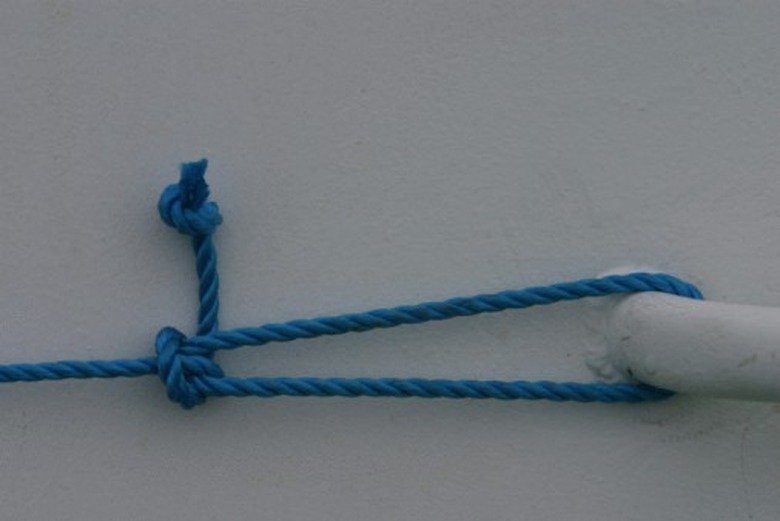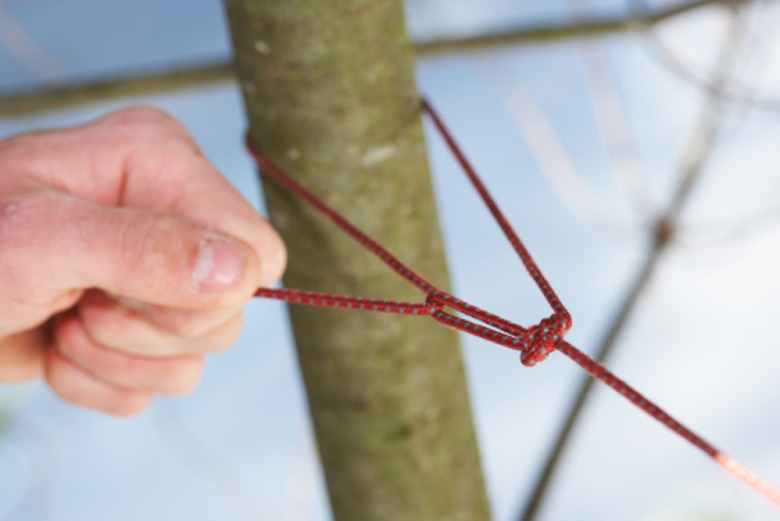What Kind Of Knot To Use On A Clothesline?
There is an old saying: "Those who can't tie knots tie lots." To string a tight clothesline, three knots come into play: a fixed loop on one end of the rope to anchor the line, a second loop in the line to tighten the clothesline and a hitch to cinch the line tight. These knots each have a name: the bowline, the alpine butterfly loop and the half hitch.
Terms
Terms
when talking about tying knots, it helps to define some terms. Rope has two ends: the working end and the standing end. The working end passes around objects and through itself to create knots. The standing end is the rest of the rope. A loop made in a rope is called a "bight." Make a "U" shape in a rope and twist it once to create one. For continuity, any bight should have the working end in front of or on top of the standing end.
Bowline
Bowline
Make a bight 18 inches from the working end of the rope. Pass the working end through the bight from underneath. Maneuver the working end under the standing end and bring it back over and into the bight from the top. (Try this to remember: The rabbit emerges from a hole, goes under the log, jumps back over the log and back in the hole.) Hold the working end against the loop of rope and pull the standing end to tighten the knot. This knot holds the rope to one anchor point.
Alpine Butterfly Loop
Alpine Butterfly Loop
Pass the rope around or through a second anchor point. Bring it back along the rope to determine where the butterfly should be. Make a bight. For the rest of this knot, consider the top of the loop as the working end. Twist the bight again and bring the working end down past the standing end. The knot should resemble a traditional pretzel at this point. Bring the working end behind and back through the small football shape in the center of the pretzel. Tighten. Pulling the rope will not undo this loop.
Half Hitch
Half Hitch
Pass the loose working end of the rope through the alpine butterfly loop and pull the working end toward the second anchor point to tighten the line. Use your thumb to hold the rope against the butterfly, freeing the working end from tension. Pass the working end across the tight line, making a new loop, and bring the working end around the back and through. Pull the half hitch tight. For added piece of mind, tie another half hitch behind the first.
Pulleys and Other Hardware
Pulleys and Other Hardware
If using pulleys, the bowline will serve as the anchor. Tie the bowline and pass the other end through both pulleys, ending back at the bowline. Pass the working end through the loop of the bowline, build a butterfly loop in the rope, tighten and hitch. A clothesline tightener replaces the butterfly and hitch; tie the bowline to the hardware and pass the rope through the pulleys and tightener. No matter what method you use, check the knots and rope periodically for wear and tighten as required.
References
- "Klutz Book of Knots"; John Cassidy; 1985
- "Guide to Knots"; Geoffrey Budworth; 2005


